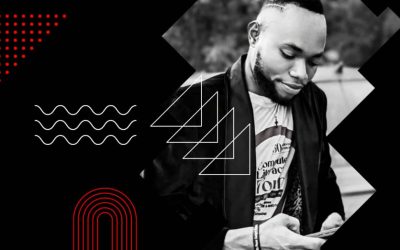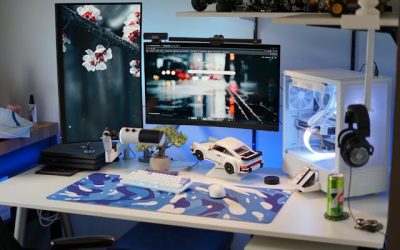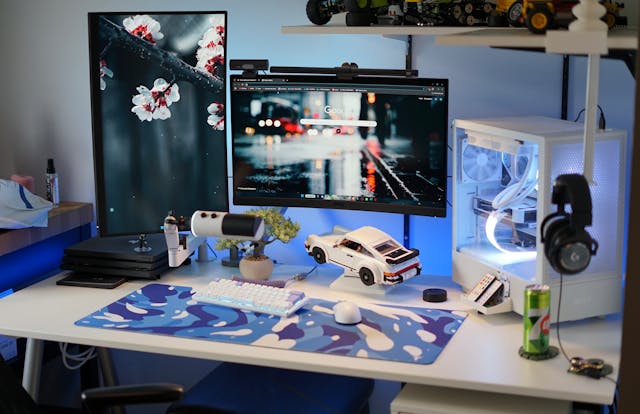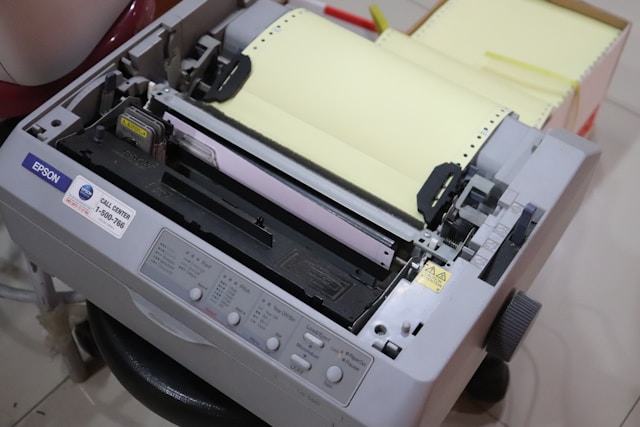How to Start a Blog in 2026 and Turn It Into a Steady Income Stream
 Image // Freepik
Image // Freepik
Back then, I was experimenting with how to create a successful website. I was doing little tasks of web designing for clients and gradually learned how a digital platform actually works. The early projects provided me with the knowledge that design is not all about appearance but about functionality, reliability, and the ability to create an experience that will assist people in solving real-life problems.
At some point, I realized I shouldn’t only be building websites for others—I needed to build one for myself too. That’s how I built 99Scholar, a digital academy library and career resources hub designed to help students and young professionals access quality career documents, learning materials, and research resources with ease.
Since the release of 99Scholar, I write more frequently, not only tutorials and guides but also about my personal reflection on what it takes to create something that is valuable in the digital space. It was then that I thought I should start a blog to express my experience of what I have learned to help other creators turn online presence into lasting businesses; here comes MoneyBreez.
But as most beginners, I almost got lost in the noise—chasing trends, confusing consistency with progress, and learning the hard way that blogging isn’t just about posting. It’s about direction. It’s a matter of knowing the way the internet works.
That is why I am writing this to show you how to build your own blog with the right guidelines that will help you avoid some of the expensive mistakes most beginner bloggers make.
Why start a blog?
The online space keeps changing fast. But one thing remains true: people still pay attention to stories, value, and authenticity.
So, just in case you dreamed of becoming a blogger and making real money out of it, 2026 will be a good moment. The only difference now? The strategies are smarter, the tools are simpler, and the competition rewards originality. So, here’s the…
Step-by-step guide to launching a profitable blog in 2026—one that works like a business, not just a diary

Step 1: Select a Niche that Solves a Specific Problem
Your niche is your basis in the blog. And in 2026, certain broad conquests.
Do not write about everything; write about one thing that is important to a certain group of people.
Examples:
- “AI tools for freelancers”
- Budget travel among young professionals.
- Introduction: Personal finance at a distance.
Use tools like Google Trends or AnswerThePublic to discover what people are searching for. The more specific your niche, the faster your blog will grow.
Step 2: Install Your Blog. You Don’t Need Any Coding Skills
The installation process is easier than ever before and you do not have to employ a programmer.
What You’ll Need:
- Domain Name: Something catchy (such as yourname.com
- Hosting: Go for affordable but high quality hosting such as Hostinger or Namecheap, GoDaddy, Hostinger
- Platform to build your blog: WordPress – It powers more than 40 percent of websites. Drupal is also a good option. But I will recommend you use WordPress if you’re just starting.
- Theme: Select a fast and clean one such as Astra, GeneratePress, and Kadence.
💡 Pro Tip:
After your site has gone live, connect it with Google Analytics and Google Search Console. They will allow you to see what is working and what needs improvement.
Step 3: Create Content that Resonates and Converts
AI has the capability to write the words, but can’t write your personal experience or story.
The most preferred blogs are the ones that combine storytelling and strategy.
Every post should:
- Solve an actual problem that your readers have.
- Describe your experience or what you have learned.
- Provide subheadings and graphics to ease readability.
- Maximize search engine optimization with the help of tools like Yoast SEO or RankMath.
💬 Example: When you are writing on personal finance, share your budgeting journey, talk about your own experience of making money, your failures, and your successes, this creates trust in your writing.
Here’s what to do:
- Post 2-3 posts a week.
- Repurpose the content into short versions and repost them with the post link on X (Twitter), Facebook, LinkedIn and Pinterest pins.
- Grow your email list: You can use ConvertKit or Beehiiv to build your email list.
- Smart use of SEO: Use long-tail keywords, and update old posts on a regular basis. It is even possible to optimize the content automatically with the help of AI SEO tools such as SurferSEO or NeuronWriter.
Step 5: Make Money off Your Blog Intelligently.
Once the traffic begins, it is time to shift focus to revenue. The 5 recommended blog monetisation models are as follows:
- Affiliate Marketing: Promote products you already use. Try Amazon associates or Impact.
- Sponsored Posts: Partner with brands in your niche.
- Digital Products: Sell templates, guides or eBooks.
- Ad Revenue: Use Ezoic or Google AdSense to display ads.
- Email Newsletter Ads: Monetize your subscribers directly.
Tip: Diversify your sources of income – this way, your income would not slow down.
Step 6: Automate and Scale
After creating a good foundation, then you should begin to work smarter, not harder.
- Automate your workflow: Use tools like Notion, Trello, or ClickUp for scheduling and planning.
- Hire freelancers: hire a graphic designer or content writer so you focus on other important things like growth strategy.
- Post in advance: There are Apps such as Later or Buffer that manage your post-scheduling schedule.
The goal? Create a system which is always making you money even when you are asleep. That’s how you become not just a blogger but a digital entrepreneur.
Step 7: Remain Human and authentic in the World of AI.
The future of blogging is personality.
There’s going to be continuous advancement in AI, yet readers need human voices – people who have their life experiences to share in order to give real insights for others to learn.
Connection is a key if your blog must be successful in the long term, not just content. So write as though you are helping your friend to solve a problem, not as though you were selling to an audience.
Common Blogging Mistakes (and What to Do Instead)

When beginner bloggers start blogging, they think it’s just about writing posts and waiting for readers to show up. I made that same mistake. But the truth is that if you’re blogging with long-term growth or monetization in mind, you should treat it as a business that needs consistency, not as a quick cash hustle. This is where most people fail to get the system right from the beginning.
Let’s break down some of the most common blogging mistakes (and how to fix them):
1. Writing to Yourself Instead of Your Reader.
It’s fine to use your blog as a personal journal. But if you want to build an audience or brand, you need to shift focus.
What most bloggers do: They write what they find interesting, not what their readers are searching for.
Do this instead: write about the problems that your readers are attempting to solve. Write as if you’re speaking directly to them. Use tools such as Google Trends or AnswerThePublic to identify the questions that people do ask in real life.
2. Ignoring SEO and Search Intent
You do not need to be an SEO expert. But not thinking about optimizing your content means that your posts will never be seen.
What most bloggers do: They publish posts without considering keywords, titles, or how search engines categorize their content.
What to do instead: Optimize your post by intent. That is to say, understand why someone is searching for a keyword. Use free tools such as Ubersuggest or Google Keyword Planner to find out what people want to know, and create your article around providing them with the best and most understandable answer to their question.
3. Publishing Without Promotion
Even great contents get lost without being distributed.
What most bloggers do: They hit “publish” and wait. That’s it.
Do this instead: After posting on your blog, share your posts on platforms that matter like your email list, X (Twitter), LinkedIn or Facebook groups. Re-use your content to create brief posts, images or carousels. Regular posting to channels can triple your organic reach.
4. Treating Consistency Like an Option
Blogging is a reward of patience and frequency. It is not posting every day but it is being consistently present.
What most bloggers do wrong: They post three articles a week, and then take a month off, then resume. That’s not advisable if you want to scale your blog fast.
What to do instead: Create a content schedule and adhere to it. Publishing one good post every two weeks is better than nothing. Jot down the calendar for your posting by using free apps such as Trello or Notion.
5. Forgetting That a Blog Is a Brand
A blog is not simply text, but it represents your voice, design and your message.
What most bloggers do: They choose any theme, omit images, and write without purpose or direction.
What to do: Build a content identity. Select colors, tone and visuals which reflect on your brand. Design basic brand images on Canva or Figma. Each of the posts must appear and sound like you.
6. Not Building an Email List Early
Most times your blog visitors will not always be online; but your email subscribers will be your long-term assets.
What most bloggers do: They wait until “later” to start collecting emails.
What works better: Add a simple sign-up form using tools like ConvertKit or Mailchimp. I use ConvertKit on my blog, the features on its free version are too generous enough to get started with. Offer something of value such as a checklist, a guide, or even updates. That will help you to build connection and trust.
7. Giving Up Too Early
The majority of the blogs fail not because they were not good but simply because the people who started the blogs lost momentum and gave up.
What most bloggers do: They expect fast traffic and income.
What works better: Focus on building relationships, improving your craft, and learning analytics. The only way to grow for real is through consistency, not overnight success. The time frame of real blogging results is 6-12 months.
Frequently Asked Questions About Blogging

1. What exactly is blogging, and why is it still relevant today?
Blogging is a practice of publishing written information on the internet. Such information include articles, guides, or stories to inform, entertain, or inspire readers. It’s still relevant because it builds trust, attracts organic traffic, and helps individuals or brands share their voice authentically in a world full of noise.
2. Is it possible to continue to blog and still make money in 2026 and beyond?
Absolutely. Blogging has moved beyond the ad clicking business to a full scale business. Affiliate marketing, sponsored posts, sales of digital products, courses, and consulting can be used to earn money. The actual distinction in the modern world lies in niche clarity, content consistency, and SEO strategy, not luck.
3. What niche should I choose for my blog?
Select a niche that you are familiar with, a subject area you like. Consider a niche that solves real problems for others. The niches that are profitable are personal finance, digital marketing, AI tools, software & gadgets, content creation, health and wellness, and career development. Use keyword research tools like Google Trends or Ubersuggest to confirm demand before you start.
4. How long does it take to grow a blog?
The average time it takes to achieve stable traffic and presence on most blogs is 6-12 months, particularly with the help of SEO. Consistency is the key. One good post every week for six months is better than posting low value content everyday. Treat your blog like you’re building a brand, not chasing viral views.
5. How do I drive traffic to my blog?
Use a mix of strategies:
- SEO: Optimize for keywords your audience searches for.
- Social Media: Share snippets or visuals on X (Twitter), LinkedIn, and Pinterest.
- Email Marketing: To foster loyal readers, create a list of subscribers.
- Partnerships: Guest post or cross-promote with other creators in your niche.
6. Do I need to be a great writer to start a blog?
No – you only have to communicate directly and sincerely. You can use tools such as Grammarly and Hemingway Editor that help to refine your writing. Readers don’t need perfection, they need personality and clarity.
7. What platform is best for blogging?
WordPress is the best option in case you wish to have complete control. It’s beginner-friendly. You can set up your blog in minutes, no coding skill is needed.
But if you prefer simplicity, Medium, Substack, or Ghost can work. But if you’re building a brand, you should own your own site because it provides you with long-term control, flexibility, and SEO power.
8. How do bloggers make their first $1 online?
Begin with affiliate links on the tools or products you are already using. Create tutorials or honest reviews. Once your blog grows, you can monetize with ads (Google AdSense), sponsored content or personal online products such as eBooks or courses.
9. How long should a blog post be?
In the case of SEO, the goal should be 1,000-2,000 words of meaningful information. When it comes to storytelling or personal blogs, shorter text posts are sufficient (500-800 words) – just make every line valuable or emotionally engaging.
10. What mistakes should new bloggers avoid?
- Writing without a clear niche or audience.
- Ignoring SEO and analytics.
- Posting inconsistently.
- Excessive use of AI without individual personal insights.
- It is putting emphasis on money before providing actual value.
11. How do I stay consistent with blogging?
Make a content calendar, write posts in bulk and produce videos or newsletters. Repurpose your old content into videos or newsletters. Remember: consistency beats intensity. One blog a week with intent is better than five rushed posts a month.
12. What makes a blog post go viral or get shared?
Strong emotional hooks, storytelling, useful tips, and relatable facts. The post should either inform, solve a problem, or answer the reader’s questions. Include images, quotes, and postable headlines. Such things entice readers to share your post.
13. How do I know if my blog is working?
Track your metrics:
- Organic traffic growth (Google Search Console)
- Engagement rate (comments, shares)
- Conversions (email sign-ups or product clicks)
If readers return, comment, or bookmark your posts, then you’re doing it right.
14. Should I use AI to write blog content?
AI will assist you in brainstorming, outlining, or editing your work more quickly, but it will never substitute your experience and your true voice. Use it as a co-pilot, not a ghostwriter. Readers can tell the difference.
15. What are the practical steps to start blogging today?
- Choose your niche.
- Purchase a hosting company and domain (such as Namecheap and Bluehost).
- Install WordPress.
- Pick a clean, fast theme.
- Make your first post and spread it all around. The first post you make does not necessarily have to be good. It just has to be published. But have in mind to improve as you go.
So…
It is not just about making money online by starting a blog. It’s about building a digital hub — one that educates, inspires, and earns you money sustainably.
Don’t wait for the “right time.” Start your blog today. Because blogging can change your life if you refuse to give up so soon.
Hey! I'm Akpan Unwana, the founder of MoneyBreez. I am a digital entrepreneur, graphic and web designer who loves to use the digital space to generate income, freedom and meaningful opportunities. Over the years, I have been able to understand how design, creativity, and clever investing can be used to build real opportunities online
I write on MoneyBreez about real life tips on how to earn online, using emerging technologies to create wealth and be a smarter person with money.














